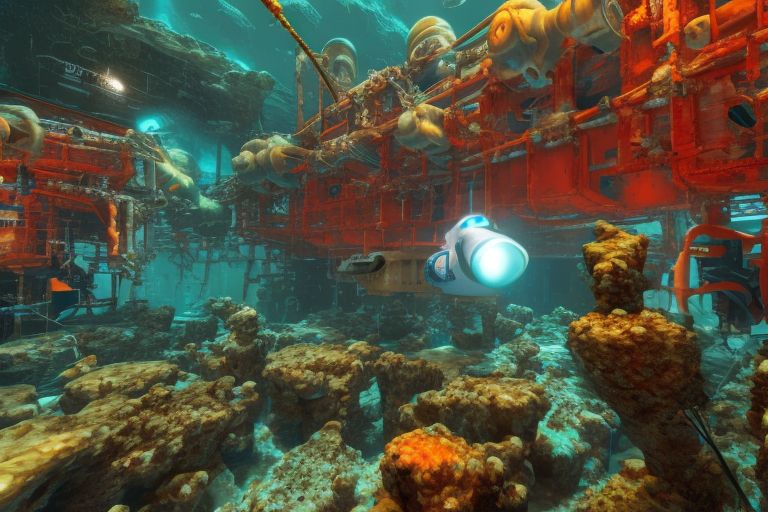Scientists Discover New Species of Deep-Sea Worms
Scientists have identified two new species of deep-sea worms living in the Atlantic Ocean during an expedition conducted by researchers from the University of Copenhagen in collaboration with HERMES project. The larger worm measures up to 25 cm long while its smaller counterpart measures only 5 cm long; both live at depths between 500 and 2500 meters below sea level on different surfaces such as rocks or mud/sand respectively. This discovery provides further insight into how life adapts to different environments within our oceans
Mar. 19, 2023 4:00PM
Generated in 22.7 seconds

A picture of a deep-sea ROV exploring an underwater environment filled with mysterious creatures
In a groundbreaking discovery, scientists have identified two new species of deep-sea worms in the Atlantic Ocean. The two species, dubbed Eulagisca gigantea and Eulagisca intronigra, were discovered by researchers from the University of Copenhagen during an expedition to explore the depths of the ocean. The expedition was conducted in collaboration with the European Union’s HERMES project, which aims to map and explore unknown areas of the ocean floor. During their journey, researchers used a remotely operated vehicle (ROV) to collect samples from various locations in order to identify new species. After analyzing their findings, they determined that two distinct species had been discovered. Eulagisca gigantea is a large worm measuring up to 25 cm long and 1 cm wide. It has an orange-brown body with yellow stripes running along its length and can be found living on rocky surfaces at depths between 500 and 2000 meters below sea level. Meanwhile, Eulagisca intronigra is much smaller than its counterpart; it measures only 5 cm long and 0.5 cm wide with a black body covered in white spots. This species lives at depths between 1000 and 2500 meters below sea level on soft sedimentary surfaces such as mud or sand. The discovery of these two new species is significant for marine biologists as it provides further insight into how life adapts to different environments within our oceans. “This discovery highlights how little we know about life forms inhabiting our oceans," said lead researcher Dr Mads Thomsen in a statement released by the university."It also serves as an important reminder that there are still many mysteries waiting to be uncovered beneath the waves."